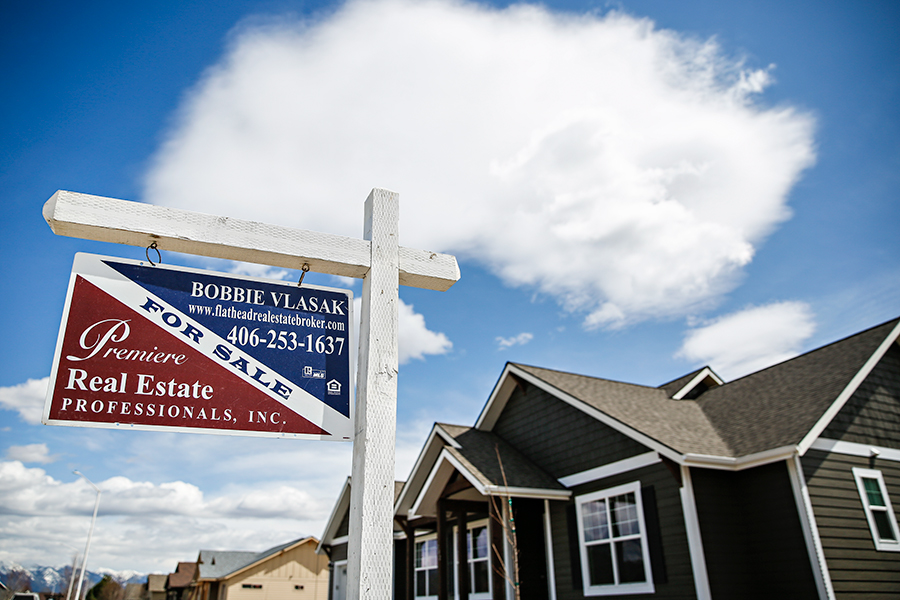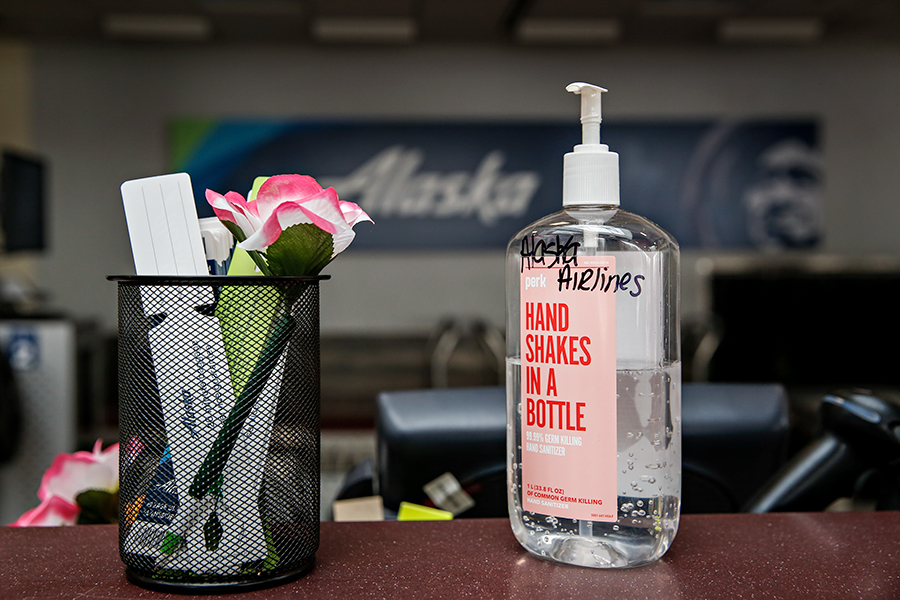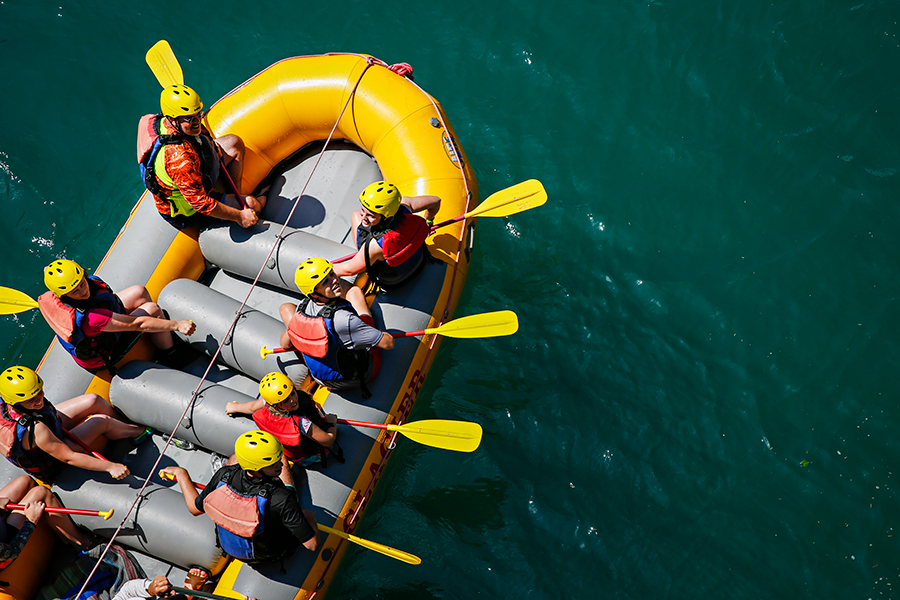2020 Business Year in Review
Looking back at the top storylines from an unprecedented year in the Northwest Montana economy
By Maggie Dresser
Hospitality Industry Reels in Wake of Emergency Public Health Closures
When the ramifications of the novel coronavirus unfolded in the U.S. and around the globe last March, emergency public health closures across Montana dealt an immediate blow to local economies, which left thousands of workers suddenly and unexpectedly displaced.
In the Flathead Valley, businesses, including bars and restaurants, were quick to comply with the orders from state and county officials to close public spaces and dining areas, with many tailoring their food services to accommodate takeout and delivery orders only — effectively keeping the lights on and a core staff in place, but accounting for a slim margin of needed revenue.
At the Whitefish Lake Golf Club, Whitefish Lake Restaurant owner Doug Reed said the popular restaurant shifted to a takeout-only model on March 17, a few days before countywide enforcement of the policy and after confabbing with other local business owners about proactive measures.
“Every day has gotten busier,” Reed said on March 23. “We had eight people on staff this weekend that wouldn’t be working otherwise, so it’s been encouraging. It’s still only a fraction of what we would normally do in business, but it’s been encouraging. Of course it’s all local customers. We know 95% of the customers placing orders because they’re doing it to help and support us.”

Banks See High Demand for Loans and Refinancing
Banks experienced a lot of activity through the Small Business Administration’s $349 billion federal Paycheck Protection Program (PPP) last spring, which authorized forgivable loans to small businesses to pay their employees during the pandemic. But the loan program ran out of funding on April 16 and could no longer accept applications.
Glacier Bank Market President Bob Nystuen said the bank’s 16 locations had received 1,100 PPP loan applications as of April 16, which would total $100 million if they all were processed.
“(This) is something that we never saw coming,” Nystuen said in April.
Seeking a Safe Haven
Realtors in the Flathead Valley noticed an influx of homebuyers moving to the Flathead last spring, and that trend continued all summer.
“Two things are happening,” said Wendy Brown of Northwest Montana Association of Realtors (NMAR) in June. “People are really sick and tired of living on top of each other in the big city, and number two, everybody’s figured out how to work from home … So that’s probably our biggest driving factor — some of the barriers that kept people from being here before are no longer barriers.”
The low volume of coronavirus cases last spring, shift in remote work and growing dislike of cities have likely contributed to the booming housing market in the Flathead Valley, according to realtors.
“It’s never been busier,” Brown said.

Foreign Visa Suspension Concerns Local Hospitality Businesses
After the Trump administration suspended some foreign worker visas until at least the end of the year, including the J-1 visa, a number of businesses in the Flathead Valley’s hospitality industry weren’t able to utilize foreign workers that they typically hire seasonally.
Every season, Whitefish Mountain Resort (WMR) hires 30 J-1 workers to engage in cultural diversity and to fill positions in housekeeping, back-of-house and food and beverage, jobs that are typically unattractive to Americans and difficult to fill.
“When you have a student here for a cultural exchange, they’re not going after that job because that’s the job they want,” former WMR spokesperson Riley Polumbus said. “They’re going after that job because it’s part of their cultural exchange.”
The busy winter typically relies on roughly 500 employees, while the summer season only requires about 200.
Polumbus worried that without J-1 workers in the winter, WMR will miss out on cultural diversity and face hiring challenges for those hard-to-fill positions.
A Recovering Airline Industry
During nationwide lockdowns back in April, Glacier Park International Airport (GPIA) had only 21 people through the check-in on its lowest day, and Airport Director Rob Ratkowski said about half of them were crew members.
But as the summer tourist season in the Flathead moved onward and the region remained an attractive destination in the middle of the pandemic, July passenger numbers grew to about 1,027 per day, about half of what GPIA saw last July.
Boarding numbers continued increasing in late summer and fall, including 56,046 total passengers in September, roughly the same as 2018 but lower than the 70,643 of last year.
While the passenger numbers remained below normal, they had grown significantly since the spring, which Ratkowski said was likely due to the uptick in leisure flights.

Unemployment Claims Stack Up
While there was a backlog in unemployment insurance claims beginning in the spring, officials at the Montana DLI said in October that even as operations were improving, a backlog could be expected for a long time.
“Those are probably the most overworked people in state government,” said Paul Martin, the administrator of the Unemployment Insurance Division.
On top of an overworked staff processing regular unemployment insurance claims and PUA program claims, a separate team was also working to identify fraudulent claims, which were skyrocketing nationwide this fall.
According to DLI officials, criminals try to collect benefits by fraudulently obtaining the addresses of for-sale properties and using them as their home addresses.
The PUA program was hit with fraudulent identity theft soon after it was enacted, and since the program was designed for self-employed individuals, Martin said it was difficult to authenticate without an employer to verify claims.
Between June 1 and Aug. 31, the department stopped $189 million in fraudulent payments in addition to another $185 million in possibly fraudulent payments.
Slow Spring Gives Way to Busy Summer for Outfitters
When Glacier National Park closed at the end of March, right when coronavirus lockdowns were gripping the world, outfitters in West Glacier and the Flathead Valley were canceling reservations and receiving few phone calls for rafting, fishing and trail ride bookings.
Fast forward to June when the park reopened, and Glacier Guides co-owner Denny Gignoux said he received a swarm of phone calls from tourists looking to book a trip.
“We hit the middle of June and then we had a whole flurry of new people call and want to make a reservation,” Gignoux said. “But they wouldn’t call once — they’d call two or three times and they’d want to discuss COVID policies. Our poor office staff was answering to people all the time. It was exhausting.”
The busy summer was a stark contrast to earlier this spring, when nearly 40 gateway businesses ranging from outfitters to banks to park concessionaires wrote a letter to Glacier National Park Superintendent Jeff Mow requesting more clarity about the park’s reopening procedures in order to save their businesses.

A Higher Need for Nonprofits
With limitations on public facilities and in-person services, Tonya Horn, the executive director at the Flathead Warming Center, said many homeless people were left out in the cold with nowhere to go.
“There’s nowhere for folks to go during the day,” Horn said in November. “A lot of services that used to be open to them during the day have limited hours or they’re closed.”
The Flathead Warming Center opened a temporary facility on Nov. 20 in Faith Lutheran Church’s gymnasium in Kalispell. The nonprofit then opened a permanent facility on Dec. 21 on North Meridian Street in Kalispell, which holds 40 beds.
After talking to healthcare workers and law enforcement officials, who often interact with the homeless population, Horn said there has seemed to be a higher demand for shelter this year amid the pandemic.
Demand also soared at other social-service providers such as food banks, including Flathead Food Bank in Kalispell, which recently reported being on pace to distribute 3.5 million pounds of food this year compared to the usual 1.5 million pounds or so.